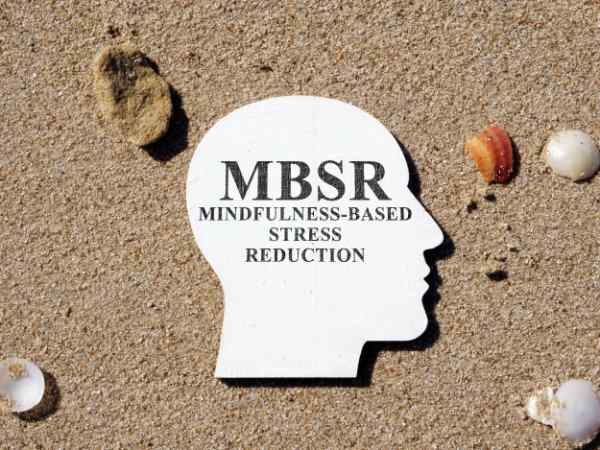MBSR therapy has evolved into a treatment program embraced by hundreds of thousands of people worldwide for people looking to ease the pain associated with a wide range of ailments. It has become an effective way of dealing with chronic pain, depression, and anxiety issues. You can also use MBSR to reduce stress levels as well.
Mindfulness-Based Stress Reduction (MBSR) therapy is designed to be an eight-week program. Participants participate in a series of exercises designed to alleviate the pain and frustration they are feeling in their lives. It is a secular program and not based on any religion, so it is open to everyone.
If you or someone you are close to has been suffering from chronic pain or depression for far too long, you may want to consider the benefits that can be offered by MBSP therapy. It is a program that is accessible to you no matter where you happen to be in the world. Continue reading to discover more about this groundbreaking program and how it can impact your life.
Table of Contents
What is MBSR Therapy?
Mindfulness-Based Stress Reduction (MBSR) therapy is a type of therapy that is based on the principles of meditation. It was originally developed to reduce stress levels in its participants but has evolved into a complete program of exercises designed to enhance and contribute to overall well-being.
MBSR therapy is a different type of meditation program. It trains you to better focus your attention on everything that you are feeling and going through. This will allow you to make decisions that positively impact your life daily. Through the therapy program, participants will learn several strategies that teach them to respond effectively to stress. While MBSR meditation is great for the mind, you may be wondering “what does meditation do to the body?” It helps heal and restore the body as well as the mind.
When talking about what MBSR Therapy is, it is equally important to talk about what it is not. This type of therapy is not meant to be taken as a cure for any type of disease. Instead, it is meant to work alongside traditional treatments offered by medical providers. It is also designed to be used alongside psychological treatment and not in place of it.
People who go through an entire MBSR Therapy program consistently report positive results in the following areas:
- An ability to deal more effectively with short- and long-term stress
- A decrease in physical and physiological symptoms that impact overall well-being
- Feeling more relaxed
- Noticeable reduction in the level of pain being felt
- A heightened ability to handle chronic pain
- A refreshed outlook towards life that results in a more positive outlook towards life
These are just a few of the components of MBSR Therapy. Each participant will receive different benefits from the program, as it is designed as a comprehensive approach towards using the mind to better control pain and emotions. While it is not be viewed as a cure for any disease, it has provided much sought after relief to its legions of participants.
How Long Does an MBSR Therapy Session Last?
Different types of MBSR Therapy sessions take place over the course of the eight-week program. There are group meetings that take place every week. Each of these is designed to last for 2.5 hours. There is also a one-day retreat to attend at some point during the therapy program.
The one-day retreat that was just mentioned contains a mindfulness practice exercise that will last a total of seven hours if done to its completion. Participants will also have homework exercises to complete every day of the program. Each of these typically takes 45 minutes to finish. MBSR Therapy is intensive, but it is designed to produce noticeably effective results.
What Happens in An MBSR Session?
An MBSR session consists of the two main components of mindfulness meditation and yoga. (You can get certified to teach meditation today!) There is not a set script that participants are asked to follow, nor are there any set steps that everyone must follow. Instead, each session consists of mindfulness exercises that direct the individual participant.
Even though every individual participant may experience something different within each session, certain guiding principles remain within MBSR Therapy. These include the following three components that form the foundation of each MBSR session.
- Each session should be a challenge and not a chore – Therapy sessions revolve around the individual beginning to observe their own life through a new lens. The goal is to learn to mindfully see life as an adventure as opposed to one meaningless activity after another.
- Individual effort and motivation are necessary to get the most out of each session – This should be a disciplined and focused practice. Meditation is the therapy used to invoke the required level of effort and motivation required to make MBSR therapy work. Each session should be undertaken, regardless of whether the participant really feels like taking part.
- Lifestyle changes should be almost immediate – From the very first MBSR session, participants should begin to immediately and noticeably change their lifestyles. This takes place through mindfulness practice and a commitment to a minimum of 45 minutes a day of exercises, six days a week.
These three components of the typical MBSR session should continue throughout the eight-week program. It is how each individual participant can progress throughout the therapy and receive the relief from pain and stress that they have been longing for.
3 Examples of MBSR Exercises
As you might imagine, there are quite a few different exercises contained throughout an MBSR therapy session. Each of these exercises is designed to promote overall well-being and lead to an enhanced sense of mindfulness. To help explain this better, the following three examples of MBSR exercises are provided to you.
MBSR Mindfulness Exercises
As you can determine by the name of this therapy, mindfulness exercises form a major part of the program. Many people take mindfulness to mean that you need to get yourself into a certain mindset. However, it is much more involved than that. There are quite a few ways you can engage in mindfulness, with the following three exercises being contained in MBSR therapy.
Most people go through their day without even giving much thought to what they are doing or what they are thinking. Actions are just made based on instinct without much regard for the big picture. Focus mindfulness is an exercise that puts the individual in control of their own thoughts by almost forcing them to observe what they are thinking about in the moment.
In order to maintain this level of focus on the mind, a series of exercises are taught. They typically involve focusing on breathing to keep you grounded in what is taking place at the moment. This is a form of meditation that has been shown to produce effective results.
Awareness exercises are completely different than those involving focus. Being aware when you are mindful involves knowing what is taking place in the external world around you instead of the internal. You will be looking for an outside perspective as if you are trying to view the world from somebody else’s point of view.
Throughout MBSR Therapy, participants will be asked to shift from focusing mindfulness exercises to those involving awareness mindfulness. The key to this exercise is to watch as your stream of consciousness goes before you dispassionately. Then, take something for that stream and focus on it. Examples can include the following:
- An image from a dream
- Some type of memory
- A painful feeling that you can recall
Once you begin to focus on this concept, you can then begin to become aware of how it is impacting your well-being and move forward with the exercise.
MBSR Awareness Exercises
There are many types of awareness exercises that participants will go through during MBSR therapy sessions. The goal of each of these exercises is to increase awareness about how certain events in your life are impacting your overall outlook. Through this awareness, you can then begin to ponder ways to change for the good.
One of the MBSR awareness exercises that you will want to participate in is called ‘Simply Watching.’ The only thing you need for this exercise is your own mind and your thoughts. You will not actually focus on your thoughts as they occur. Instead, you will want to let them pass you by as if they were a cloud in the sky.
The key is to not judge or apply any type of opinion to the thought that comes into your mind. Instead, simply acknowledge each thought as it appears and identify it in your own mind. This will become useful later on as you continue with other awareness exercises. For now, you simply want to be aware of each thought as it comes into your mind.
A follow-up exercise to this is ‘Worry Surfing’. It involves approaching each thought as if you are surfing on a wave. You will become aware of the warning signs that are associated with any of the negative feelings that you are having, such as worry or anxiety. Allow that negative emotion to get bigger, just like a wave, until it reaches you and then falls away.
Mindfulness-Based Stress Reduction Exercises
Yoga is a key part of MBSR Therapy. It is used as a way to reduce the level of stress within the participant and promote the practice of mindfulness at the same time. These exercises have been shown to be effective at helping individuals approach problems and deal with certain situations more positively than would otherwise be possible.
One way that these stress reduction exercises benefit the participant is that they teach the individual to be non-judgmental. You will become an impartial witness as you examine each thought and feeling that comes into your mind.
The yoga exercises promoted in MBSR therapy also promote patience. Participants will learn how to give themselves more space to learn from various experiences in life and use them for the good moving forward.
One other way that these stress reduction exercises are useful is reflected in terms of trust. You will learn to trust yourself more, using your own knowledge and experience to overcome negative emotions and pain. This is the essence of MBSR therapy and is the cornerstone of what the program teaches.

Wrap-Up
If you have been looking for a way to cultivate your own sense of self awareness, MBSR therapy may be the program that you have been looking for. By incorporating mindfulness into nearly every facet of your daily routine, you can move beyond the stress that you have been feeling and towards a more fulfilling life moving forward.
Check out this article for the best mbsr training certification online.





